A large reverse-genetic screen identifies numerous regulators of testis nascent myotube collective cell migration and collective organ sculpting
- PMID: 39745864
- PMCID: PMC11809313
- DOI: 10.1091/mbc.E24-10-0456
A large reverse-genetic screen identifies numerous regulators of testis nascent myotube collective cell migration and collective organ sculpting
Abstract
Collective cell migration is critical for morphogenesis, homeostasis, and wound healing. Migrating mesenchymal cells form tissues that shape the body's organs. We developed a powerful model, exploring how Drosophila nascent myotubes migrate onto the testis during pupal development, forming the muscles ensheathing it and creating its characteristic spiral shape. To define genes regulating this, we used RNA sequencing (RNA-seq) to identify genes expressed in myotubes during migration. Using this dataset, we curated a list of 131 ligands, receptors, and cytoskeletal regulators, including all Rho/Ras/Rap1 regulators, as candidates. We then expressed 279 short hairpin RNAs (shRNAs) targeting these genes and examined adult testes. We identified 29 genes with diverse roles in morphogenesis. Some have phenotypes consistent with defective migration, while others alter testis shape in different ways, revealing the underlying logic of testis morphogenesis. We followed up on the Rho-family GEF dPix in detail. dPix knockdown drastically reduced migration and thus muscle coverage. Our data suggest different isoforms of dPix play distinct roles in this process and reveal a role for its partner Git. We also explored whether dPix regulates Cdc42 activity or cell adhesion. Our RNA-seq dataset and genetic analysis provide an important resource for the community to explore cell migration and organ morphogenesis.
Conflict of interest statement
Conflicts of interests: The authors declare no financial conflict of interest.
Figures
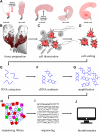

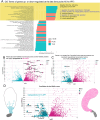
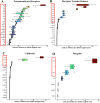



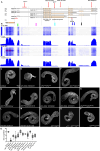
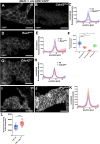

Update of
-
A large reverse-genetic screen identifies numerous regulators of testis nascent myotube collective cell migration and collective organ sculpting.bioRxiv [Preprint]. 2024 Oct 11:2024.10.10.617659. doi: 10.1101/2024.10.10.617659. bioRxiv. 2024. Update in: Mol Biol Cell. 2025 Feb 01;36(2):ar21. doi: 10.1091/mbc.E24-10-0456. PMID: 39416171 Free PMC article. Updated. Preprint.
Similar articles
-
Plexin/Semaphorin antagonism orchestrates collective cell migration and organ sculpting by regulating epithelial-mesenchymal balance.Sci Adv. 2025 Jun 20;11(25):eadu3741. doi: 10.1126/sciadv.adu3741. Epub 2025 Jun 18. Sci Adv. 2025. PMID: 40532000 Free PMC article.
-
mir-276a Is Required for Muscle Development in Drosophila and Regulates the FGF Receptor Heartless During the Migration of Nascent Myotubes in the Testis.Cells. 2025 Mar 3;14(5):368. doi: 10.3390/cells14050368. Cells. 2025. PMID: 40072096 Free PMC article.
-
A large reverse-genetic screen identifies numerous regulators of testis nascent myotube collective cell migration and collective organ sculpting.bioRxiv [Preprint]. 2024 Oct 11:2024.10.10.617659. doi: 10.1101/2024.10.10.617659. bioRxiv. 2024. Update in: Mol Biol Cell. 2025 Feb 01;36(2):ar21. doi: 10.1091/mbc.E24-10-0456. PMID: 39416171 Free PMC article. Updated. Preprint.
-
Collective cell migration driven by filopodia-New insights from the social behavior of myotubes.Bioessays. 2021 Nov;43(11):e2100124. doi: 10.1002/bies.202100124. Epub 2021 Sep 4. Bioessays. 2021. PMID: 34480489 Review.
-
Directing with restraint: Mechanisms of protrusion restriction in collective cell migrations.Semin Cell Dev Biol. 2022 Sep;129:75-81. doi: 10.1016/j.semcdb.2022.03.037. Epub 2022 Apr 6. Semin Cell Dev Biol. 2022. PMID: 35397972 Review.
Cited by
-
Plexin/Semaphorin antagonism orchestrates collective cell migration and organ sculpting by regulating epithelial-mesenchymal balance.Sci Adv. 2025 Jun 20;11(25):eadu3741. doi: 10.1126/sciadv.adu3741. Epub 2025 Jun 18. Sci Adv. 2025. PMID: 40532000 Free PMC article.
-
mir-276a Is Required for Muscle Development in Drosophila and Regulates the FGF Receptor Heartless During the Migration of Nascent Myotubes in the Testis.Cells. 2025 Mar 3;14(5):368. doi: 10.3390/cells14050368. Cells. 2025. PMID: 40072096 Free PMC article.
References
-
- Bahri SM, Choy JM, Manser E, Lim L, Yang X (2009). The Drosophila homologue of Arf-GAP GIT1, dGIT, is required for proper muscle morphogenesis and guidance during embryogenesis. Dev Biol 325, 15–23. - PubMed
-
- Bischoff MC, Bogdan S (2021). Collective cell migration driven by filopodia-new insights from the social behavior of myotubes. Bioessays 43, e2100124. - PubMed
-
- Bischoff MC, Bogdan S (2023). Dissecting collective cell behavior in migrating testis myotubes in Drosophila. Methods Mol Biol 2608, 117–129. - PubMed
MeSH terms
Substances
Grants and funding
LinkOut - more resources
Full Text Sources
Molecular Biology Databases
Miscellaneous

